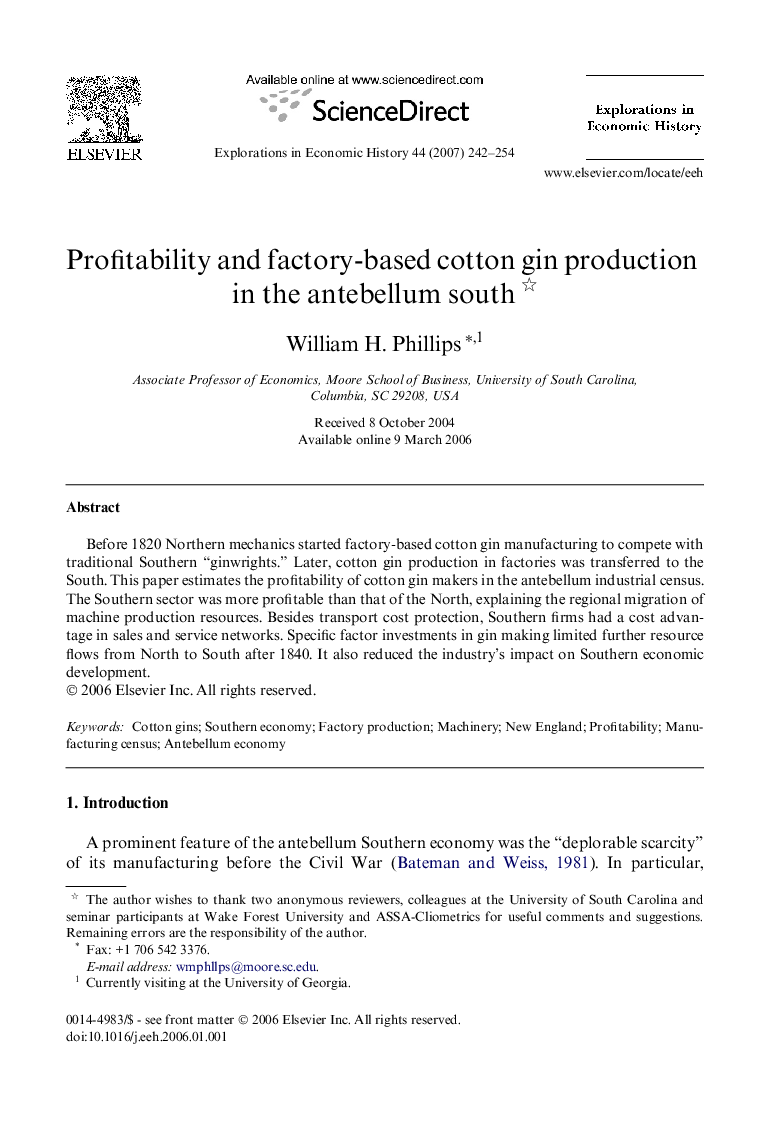| Article ID | Journal | Published Year | Pages | File Type |
|---|---|---|---|---|
| 5069084 | Explorations in Economic History | 2007 | 13 Pages |
Abstract
Before 1820 Northern mechanics started factory-based cotton gin manufacturing to compete with traditional Southern “ginwrights.” Later, cotton gin production in factories was transferred to the South. This paper estimates the profitability of cotton gin makers in the antebellum industrial census. The Southern sector was more profitable than that of the North, explaining the regional migration of machine production resources. Besides transport cost protection, Southern firms had a cost advantage in sales and service networks. Specific factor investments in gin making limited further resource flows from North to South after 1840. It also reduced the industry's impact on Southern economic development.
Keywords
Related Topics
Social Sciences and Humanities
Arts and Humanities
History
Authors
William H. Phillips,
